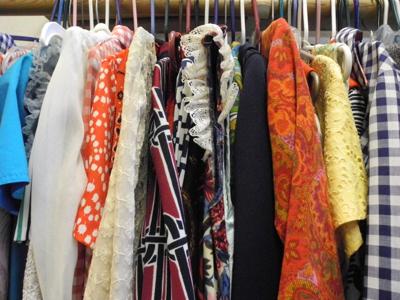
The secondhand apparel market is projected to be worth US$43.49 billion in 2024, surging to US$125.18 billion by 2034, with a compound annual growth rate (CAGR) of 11.1% from 2024 to 2034. Increased demand for secondhand clothing is predominantly attributed to their superior quality and cost-effectiveness.
Consumers have become increasingly interested in eco-friendly clothing options. Focus on sustainability and higher degree of consciousness have propelled the secondhand apparel market growth. Even as restrictions implemented amid COVID-19 cause supply-chain disruptions, the market is expected to register year on year growth at 4.8% in 2021.
Product reviews and other features of e-commerce help merchants to study purchase patterns, and trends to create products and services that meet the needs of potential buyers. This provides useful information that retailers can use to develop effective marketing strategies.
Get your Sample Report Here: https://www.futuremarketinsights.com/reports/sample/rep-gb-11161
The presence of companies such as ThredUP and Poshmark that cater to the demand for inexpensive and ecological alternatives to new clothes will push growth in the coming years. The expansion of online distribution channels also will bode well.
To retain clients, numerous fashion retailers are implementing recycling initiatives and releasing new collections of clothing made from eco-friendly fibers. Increasing consumer awareness of online resale platforms and fast-growing online start-ups offer pre-owned branded and designer goods and rental ethnic wear.
Business Growth Drivers:
- Sustainability Trend: Increasing awareness about environmental issues and a growing desire for sustainable consumption are driving the popularity of secondhand apparel. Consumers are increasingly embracing pre-owned clothing as a way to reduce waste and minimize their carbon footprint.
- Cost-Conscious Consumer Behavior: Economic factors play a significant role in the growth of the secondhand apparel market. With rising living costs and stagnant wages in many regions, consumers are seeking more affordable options for clothing. Secondhand apparel provides an attractive alternative to buying new, allowing consumers to access quality clothing at lower prices.
- Online Marketplaces: The proliferation of online platforms and marketplaces dedicated to secondhand clothing has significantly contributed to the growth of the industry. These platforms offer convenience, a wide selection of inventory, and often competitive pricing, making it easier for consumers to buy and sell pre-owned clothing.
- Fashion Trends and Vintage Appeal: Vintage and retro styles have become increasingly popular in mainstream fashion, driving demand for secondhand apparel. Consumers are drawn to unique and timeless pieces that reflect individual style preferences, creating a lucrative market for vintage clothing and accessories.
- Changing Attitudes Towards Ownership: The shift towards a sharing economy and the rise of rental and subscription-based models have influenced consumer attitudes towards ownership. Many consumers now prioritize access over ownership, favoring platforms that offer flexible and sustainable alternatives to traditional retail.
Industry Restraints:
- Quality Concerns: Despite the growing popularity of secondhand apparel, concerns about quality and condition remain a significant restraint. Consumers may be hesitant to purchase pre-owned clothing due to fears of wear and tear, stains, or damage, particularly when buying online where they cannot physically inspect the items.
- Brand Perception and Prestige: Some consumers still associate secondhand clothing with stigma or perceive it as inferior to new clothing. Luxury brands, in particular, may struggle to maintain their prestige and exclusivity in the secondhand market, as the resale of their products could dilute their brand image.
- Supply Chain Challenges: The secondhand apparel market faces challenges related to sourcing consistent and high-quality inventory. Dependence on donations, consignments, and thrift store stock means that supply can be unpredictable and variable in terms of style, size, and condition.
- Regulatory and Legal Issues: Regulatory concerns, such as product authenticity, copyright infringement, and consumer protection, pose challenges to the secondhand apparel industry. Ensuring compliance with regulations and addressing legal issues associated with resale can increase operational complexity and costs for businesses.
- Competition from Fast Fashion: Despite the sustainability appeal of secondhand apparel, the fast fashion industry continues to dominate the market with its low prices, quick turnaround times, and constant influx of new styles. Competition from fast fashion retailers can hinder the growth of the secondhand apparel market, particularly among price-sensitive consumers.
Request the Full Report Methodology Now:
https://www.futuremarketinsights.com/request-report-methodology/rep-gb-11161
Key Takeaways from the Secondhand Apparel Market Study
- Shirts & t-shirts are expected to hold a market share 29% in 2021 owing to changing consumer preference with an expanding working woman labour force.
- Online retailing is likely to remain a lucrative channel of distribution over the forecast period with a 18.7% CAGR owing to the wider choice of products.
- Sub-Saharan Africa will dominate MEA accounting for more than 50% of the value share through the end of 2031, owing to the popularity of used clothes.
- Pakistan accounts for more than 40% of secondhand apparel sales in South Asia, owing to the presence of a large lower socio-economic consumer base.
- Guatemala leads in the Latin America accounting for over 30% value share through the forecast period.
Who is Winning?
Key players in the secondhand apparel market are aiming for strategic collaborations and other marketing strategies to expand their business and attract a larger customer base.
Some of the key players present in the secondhand apparel market are
- Thredup Inc.
- The RealReal
- Poshmark
- Vinted
- Micolet
- Percentil.ma
- Thrift+
- Chikatex
- HunTex Recycling Kft
- EBay Inc.
- British Used Clothing Company
- A&E Used Clothing Wholesale
- Mobacotex
- Tradesy
- StockX
Gain Immediate Access to Detailed Market Insights: https://www.futuremarketinsights.com/checkout/11161
Secondhand Apparel Market by Category
By Sector:
- Resale
- Traditional Thrift Stores and Donations
By Product Type:
- Dresses & Tops
- Shirts & T-shirts
- Sweaters, Coats & Jackets
- Jeans & Pants
- Others
By Target Population:
- Men
- Women
- Kids
By Sales Channel:
- Wholesalers/Distributors
- Hypermarkets/Supermarkets
- Multi-brand Stores
- Independent Small Stores
- Departmental Stores
- Online Retailers
- Others
By Region:
- North America
- Latin America
- Europe
- East Asia
- South Asia
- Oceania
- Middle East and Africa (MEA)
Author
Sneha Varghese (Senior Consultant, Consumer Products & Goods) has 6+ years of experience in the market research and consulting industry. She has worked on 200+ research assignments pertaining to Consumer Retail Goods.
Her work is primarily focused on facilitating strategic decisions, planning and managing cross-functional business operations, technology projects, and driving successful implementations. She has helped create insightful, relevant analysis of Food & Beverage market reports and studies that include consumer market, retail, and manufacturer research perspective. She has also been involved in several bulletins in food magazines and journals.
About Future Market Insights (FMI)
Future Market Insights, Inc. (ESOMAR certified, recipient of the Stevie Award, and a member of the Greater New York Chamber of Commerce) offers profound insights into the driving factors that are boosting demand in the market. FMI stands as the leading global provider of market intelligence, advisory services, consulting, and events for the Packaging, Food and Beverage, Consumer, Technology, Healthcare, Industrial, and Chemicals markets. With a vast team of ~400 analysts worldwide, FMI provides global, regional, and local expertise on diverse domains and industry trends across more than 110 countries.
Contact Us:
Future Market Insights Inc.
Christiana Corporate, 200 Continental Drive,
Suite 401, Newark, Delaware – 19713, USA
T: +1-845-579-5705
For Sales Enquiries: sales@futuremarketinsights.com
Website: https://www.futuremarketinsights.com
LinkedIn| Twitter| Blogs | YouTube




